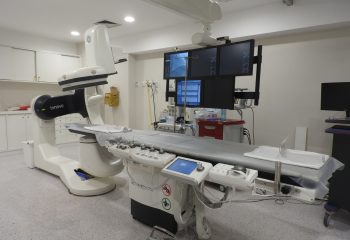It is fortunate that flying is one of the safest ways to travel, but accidents do happen on board aircrafts. Commonly occurring in-flight incidents include:
- Trips and falls
- Injuries caused by a defective seat
- Head injuries caused by spillage from an unsecured overhead locker
- Burns from hot drinks
- Injuries caused by unruly, unrestrained passengers
- Injuries caused by the impact of a meals or drinks trolley
If you believe your health or wellbeing has been badly impacted by an in-flight incident causing injury, you are entitled to claim for compensation. Aircraft accident compensation is designed to protect your lifestyle during recovery, so it’s worth ensuring your payout is maximised.
The claim process can become complex and confusing, particularly when aircraft compensation matters include communicating with overseas legal and government bodies. It is for this reason that you must ensure that the legal representation you choose are well experienced in Aircraft Accident Compensation.
The liability of an airline carrier for the death or injury of an Australian passenger on an airline flight is governed by an international convention known as the “Montreal Convention” 1999. Passengers of other nationalities may be covered by another convention, known Warsaw Convention 1929. It is each passenger’s “place of departure” and final “place of destination” which determines which treaty applies.
For example if a passenger was flying from Amsterdam in Holland to Sydney, Australia via Kuala Lumpur in Malaysia then because each of the Netherlands, Malaysia and Australia are all parties to the Montreal Convention, that convention applies for anyone suffering death or injury.
Under the Montreal Convention, liability arises for the aircraft carrier in the circumstances set out in Article 17:
“The carrier is liable for damage sustained in the case of death or bodily injury of a passenger upon condition only that the accident which caused the death or injury took place on board the aircraft or in the course in any of the operations of embarking or disembarking”.a passenger’s injury is caused by an unexpected or unusual event or happening that is external to the passenger
Although his Honour was referring to the Warsaw Convention, the same text appears in the Montreal Convention, and it is generally considered to have the same meaning.
Extent of liability
Under the Warsaw Convention liability was capped. This is not the case under the Montreal Convention, where liability is potentially unlimited. There are some practical controls on this, however as Article 21 of the Montreal Convention splits liability of the carrier into two “tiers” and slightly different rules apply in each tier.
In the first tier, which applies for all compensation amounting to less than 113-100 Special Drawing Rights (which is about $183,500.00 Australian Dollars) the carrier cannot exclude or limit its liability. This means that the passenger need not prove that the carrier was negligent, and only needs to show that the injuries, loss and damages sustained were as a consequence of “an accident”. Importantly it means the carrier is liable even if it was not negligent.
In the second tier, for all damages higher then 113-100 SDRs the carrier is liable unless it can show it was not negligent. This reverses the traditional onus of proof normally it is the Plaintiff that must show the Defendant was negligent.
Solely due to the negligence or wrongful act of a third party?
In the second tier, a carrier may also escape liability if it can show the “accident” was solely due to the negligence or wrongful act or emission of a third party.
Where can claims be made?
Claims against carriers under the Montreal Convention can be made in anyone of “5 forums” being:
- The domicile of the carrier i.e. Malaysia.
- The carrier’s principal place of business; i.e. Malaysia.
- Where the carrier has a place of business through which the contract of carriage was made.
- The passenger’s place of destination.
- The passenger’s principal place of residence, but only if the carrier operates services to that jurisdiction and the carrier conducts business from leased or owned premises there.
What amount of compensation can I claim for airline injury?
It is important from the outset to understand the purpose of compensation claims. Payouts are designed to assist injured persons to maintain a quality of life comparable to life as it was before the accident. Compensation for an airline injury is calculated according to the injuries sustained, the severity of the injuries, plus the impact the injuries have on long-term employment and lifestyle options.
Additional factors include the person’s age, the amount of lost income and the expense required for ongoing care needs. International conventions apply for claiming compensation in some instances. Financial compensation is generally paid for:
- Loss of income; past, present and future;
- Medical expenses, hospital stays, ambulance travel;
- Homecare personal and household assistance;
- Impairment benefits;
- Pain and suffering;
- Dependency damages (in death cases).
Are there any time limits for airline injury compensation claims?
The time limits for aircraft accident injury compensation claims lodged under the Montreal Convention are strict, with claimants expected to bring their claim within two years of the injury occurrence.
Australia also has a two-year time limit for seeking compensation for air travel injuries occurring within a state or interstate, although it’s recommended to make your claim at the earliest available opportunity. You may need to wait until your injuries are resolved or stabilised so accurate medical assessments can be made and optimum claim outcomes delivered.
*Disclaimer: This is intended as general information only and not to be construed as legal advice. The above information is subject to changes over time. You should always seek professional advice before taking any course of action.*







